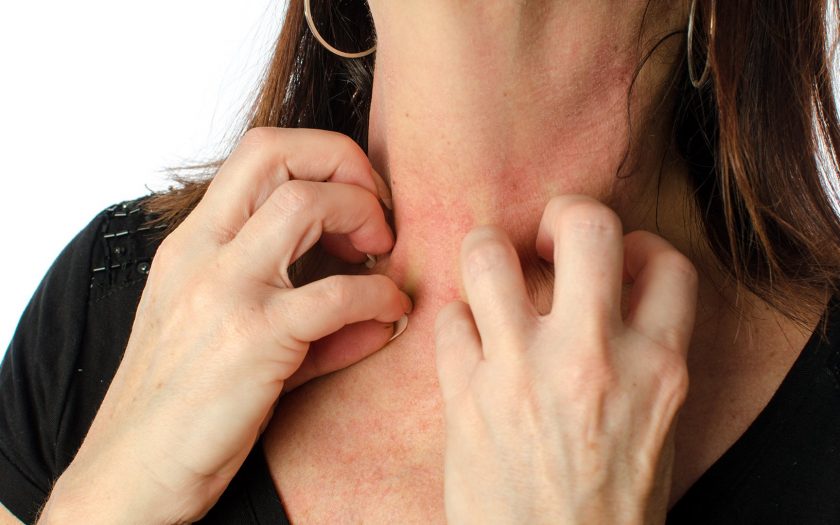Itchy rash on the skin of the face and hands.
A rash on the skin in the form of blisters and bumps may be a manifestation of eczema. Then blisters appear and then small spot erosions form. The fluid dries out, forming a soft crust, and the rash can spread to the chest, torso, abdomen and back.
All rashes are accompanied by severe itching, which causes discomfort and reduces quality of life.
Scales on the scalp.
Seborrheic eczema often develops on the scalp. In the initial stages, it manifests itself as single yellowish nodules, the number of which increases rapidly. Nodules turn into spots, forming white scales on the surface. Without treatment, this form of scalp eczema spreads to the folds of the ears and neck.
Round rash on the skin of the hands.
The rash at the initial stage has a round shape. As the rash develops, it turns into large spots. This type of rash on the hands is characteristic of fungal eczema. Microbial eczema on the hands is rare and is characterized by the formation of purulent crusts on the skin.
Rash with clear edges on the legs.
The rash is often located near the varicose veins, have a rounded shape and clear edges. This eczema is manifested by many round lesions up to 3 cm.
Symmetrical rash in the form of scales on the skin.
The symmetry of the rash is characteristic of eczema. Such manifestations of this pathology can appear on the arms and legs, sometimes rashes form on the torso. In the early stages, the rash looks like a blister filled with fluid. In the case of a prolonged form, areas of thickened skin appear at the site of such a rash. With chronic eczema, the skin heals and the eczema becomes “dry.”
Small rashes.
In these cases, due to the peculiarities of the skin, areas of eczema appear in the form of small white bumps.
Calluses on the palms.
The rash appears on the palms in the form of calluses in places not typical of calluses. Blisters form and cannot burst due to the structure of the skin.
Many blisters in the armpit with a hair in the center.
A rash with hairs in the center is a sign of special damage to the hair follicles. This type of rash called sycosiform eczema.
This form of rash is most often localized in the axillary region. In addition to the axillary area, this type of eczema can be localized on the chin, upper lip and pubic area.
Bumps on the skin of hands and body.
Hardening of the skin can mean the transformation of eczema from acute to chronic. The result is large patches of hardened, flaky skin.
Areas of depigmentation on the skin.
They usually appear in the recovery stage. Where there was a rash, the skin brightens. Most often, such light spots appear within a month. Areas of depigmentation appear after most types of eczema, but most often after microbial.
Redness and itchy areas on the skin of the feet and hands.
Hyperemic and itchy area of skin with many rashes indicates microbial eczema. The most pronounced itching with eczema is manifested in the stages of active formation of new vesicles. Also, itching is exacerbated by the accession of bacterial flora.
If you notice signs of eczema, contact your doctor immediately to prescribe effective treatment (for example, Advantan or Aristocort).

